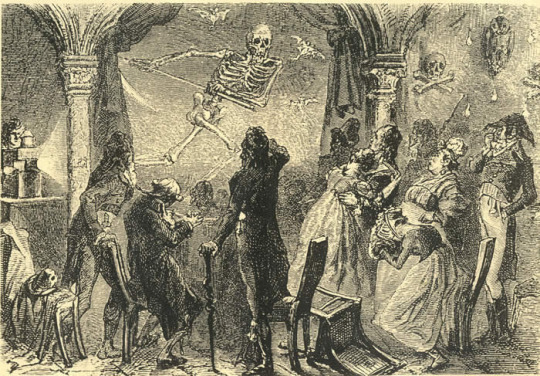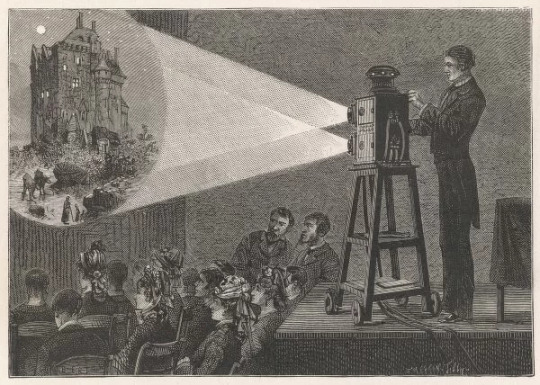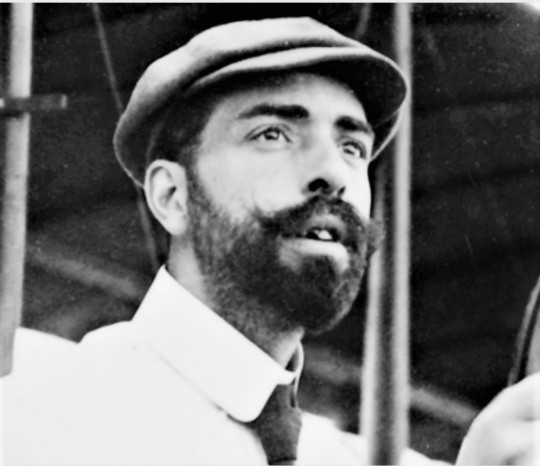#balloonists
Explore tagged Tumblr posts
Text

Local Balloonist gets bully by a pilot- 1915 recolourize!
I swear l'm alive I been busy and been prioritizing other art projects like my comic! I just wanted to draw Maximilian when he was still new to this observation balloon thing, and didn't look like he was in his 40s, probably one of flew first time getting bully by pilots
8 notes
·
View notes
Text
I’ve done more thinking on Ector the Balloonist, my little children’s book series.
Ector is twelve. If it’s a 8-12 year old series in the vein of Skullduggery Pleasant or Ember or Artemis Fowl, then this makes the most sense.
He’s deaf. I’m deaf, ergo.
He’s not an orphan per-say, but his parents left on a Very Mysterious Mission several years ago and send Very Mysterious Letters every so often.
He’s in charge of the balloon because his grandparents can’t travel too far to keep up the family courier business and his older sister has gone to school.
He talks to his grandparents on the radio a lot for advice so there’s adult presences, but not overwhelming the story.
His passengers are usually kids like him and not technically his mission.
He has a magical pet called Phyllis. Phyllis chose that name because they thought it was cool.
Magic exists alongside technology because why not.
I’m trying desperately to not take inspiration from the Mortal Engines series.
OVERARCHING FEMALE VILLAIN OVERARCHING FEMALE VILLAIN.
Ector tells bad jokes. Ector does not like having to be serious. He puts on his Very Serious Coat and Very Serious Face whenever he has to.
Ector has a real weakness for shiny rocks. This becomes a plot point.
Ector does not do romance. Ever.
2K notes
·
View notes
Text

Spyro the Dragon Playstation 1998
#gaming#video games#retro gaming#nostalgia#aesthetic#90s#1990s#low poly#playstation#sony#insomniac games#insomniac#spyro the dragon#spyro#spyro 1#balloonist#marco the balloonist#marco#1998#spyro aesthetic#ps1#psx#psone#playstation 1#sony playstation
87 notes
·
View notes
Text

#“sir” isn't gender-neutral‚ you arrogant shitburg#foldmorepaper#gif#xara3dmaker#program: xara 3d maker#transparent#wordart#animated text#animated gif#word art#text gif#textgif#font: balloonist
10 notes
·
View notes
Text
Things you can do in Blood on the Clocktower but probably shouldn't number 19:
Show the Balloonist the Recluse every single night
Or the Spy, it's the same interaction
12 notes
·
View notes
Text
Étienne-Gaspard Robert's Fantasmagorie
Okay, so in response to a tumblr post asking what fun thing I'd love to go back and see if I had a time machine, I said Étienne-Gaspard Robert's installation at the Couvent des Capucines.

Okay, so let's start with Étienne-Gaspard Robert. He was a Belgian man who lived at the end of the 18th century in France. He was actually a physicist, at least initially. He taught physics in Belgium for a time, but then moved to Paris to study art instead.
Now... I don't think it's too much to say that Robert — who took on the stage name Robertson — is the father of many kinds of what we now know as special effects. (And in fact, I initially heard about all this in a textbook about cinema history.) He used his interests in both physics and art to create entirely new forms of entertainment, and he used them to scare the shit out of people.
(He also tried to make a death ray for a while, but that was actually more common than you would think.)
To start with, let's talk about the magic lantern. Robert did not invent the magic lantern — it had been around for over a hundred years at this point — but he did use it in a way that hadn't really been seen before.
A magic lantern is really just a kind of simple projector. Glass plates had designs painted on them, light was shown through those plates, that light was focused through a lens and the resulting image was projected onto a screen.

Robert used his experience as a physicist to take this technology and run with it. He created a machine that he called a Fantoscope, and this machine allowed him to project several images at once. He could move these images independently and even change the depth at which they could be seen. In other words, instead of just putting a single image on a screen, he could fill a room with smoke and make these images look like they were traveling around the audience.
He also utilized other techniques like ventriloquism, rear projection, mirrors, and projecting images onto nearly translucent wax-covered gauze in order to accentuate this effect. Add to that his artistic ability (allowing him to paint fairly lifelike creatures) and his showmanship and... well, you've got a hell of a show.
He called it "Fantasmagorie", or "Phantasmagoria".
As one attendee described it,
"The members of the public having been ushered into the most lugubrious of rooms, at the moment the spectacle is to be begin, the lights are suddenly extinguished and one is plunged for an hour and a half into frightful and profound darkness; it’s the nature of the thing; one should not be able to make anything out in the imaginary region of the dead. In an instant, two turnings of a key lock the door: nothing could be more natural than one should be deprived of one’s liberty while seated in the tomb, or in the hereafter of Acheron, among shadows."
Robert would really ham it up, too. He was a magician, a physicist, an artist — but most especially a showman. He would tell audience members that he was going to raise the dead. He would throw what looked like butterflies or blood into the fire, chant an incantation, and then project an image of what looked like the person he was trying to resurrect — and have that image swoop down into the crowd.

This was really unlike anything that anyone had ever seen before. Due to the French Revolution, there was a real cultural fascination with death in Paris at this point, and people were simultaneously fascinated and repelled by his shows. There were people who left his shows in tears, convinced that they had truly seen ghosts.
Such was the public hysteria that his shows were even briefly shut down by the authorities in the interest of public safety!
Robert was undaunted by this, though, and came back with his greatest show yet. In 1799, he bought an old convent in Paris that had been emptied and damaged during the Revolution and set to work making it the setting for an interactive phantasmagoria.

So... to set the stage, imagine the crumbling ruins of the Couvent des Capucines. There are actual human remains here where parishioners and saints both have been laid to rest. Robert has filled the venue with smoke, and frightened visitors are invited inside to the candlelit courtyard.
He shows the crowd a series of optical illusions while giving a monologue on both life and death, the ghostly sounds of a glass harmonica on the wind.
youtube
And then things start to get weird.
According to his notes for the project, Robert used incredible illusions to bring this convent to life (or afterlife, as the case may be.) He would project ghosts and demons in the air and have them swoop down toward the frightened crowd. He would project a ghost right in the middle of the audience and then make it disappear as soon as someone tried to touch it. He used ventriloquism to make it sound like screams and sighs were coming from all directions.
One famous illusion found in the darkened rooms of the convent was that of the Invisible Woman. A glass casket was suspended above the crowd and frightened onlookers would be able to hear a voice coming from inside. This was, of course, ventriloquism — but apparently the effect was something to be remembered.
Robert also gave demonstrations of light and galvanism — or displays of the effects of electricity — during these performances. Keep in mind that concepts like electricity and magnetism would have been new and mysterious to this crowd, and as a physicist, Robert was easily able to share his fascination with such things.
This display included things like "commotions, lightning, and attractions" as well as demonstrations on how to create a spark using a Volta's pistol, Leyden jar batteries, and inducing muscle movement in a dead animal.
(If you're thinking this all feels very Frankenstein, you'd be right! Mary Shelley was being influenced by these same occult and scientific concepts when she wrote the book in 1818.)
It was all, quite literally, a lot of smoke and mirrors... but imagine it. Imagine seeing things like this for the very first time, and in a venue like this. Imagine the theatricality of it all. Imagine the magic.
In the words of Étienne-Gaspard Robert himself, "Il est difficile de décrire ces apparitions; elles sont telles que dans un siècle moins éclairé, on seroit tenté de croire à la magie."
"It is difficult to describe these apparitions; if you were from a less illuminated age, you would be tempted to believe in magic."
And that, my friends, is why I would choose to go see Robertson's Phantasmagoria if I had a time machine. For just a few minutes, I'd love to be tempted to believe in magic.

(The tomb of Étienne-Gaspard Robert at Paris's Père Lachaise cemetery.)
Further reading: Tales from the Crypt: Robertson’s Phantasmagoria and the 18th Century Origins of Horror Cinema (Dirty Sexy History) Robertson’s Fantastic Phantasmagoria, An 18th Century Spectacle of Horror (Atlas Obscura) Étienne-Gaspard Robert Wikipedia) Fantasmagorie de Robertson, Cour des Capucines, près la place Vendôme. Tous les jours à sept houres. (Robert's description of the show at the convent. French only.)
14 notes
·
View notes
Text





October 5th 1785 saw the Pioneering Italian aeronaut Vincenzo Lunardi take his balloon from Heriot’s School, Edinburgh to Ceres in Fife.
If you remember my post about Scotland’s first balloon flight by James Tytler that happened in August 1784, we ll it must have attracted the attention of the worlds pioneering balloonists, Italian Vincenzo Lunardi.
And so it was at 3:45 p.m. on this very day, an 1785, the Italian, Vincenzo Lunardi lifted off in his “aerostatic machine” from the garden of George Heriot’s School for what would be the first of a series of historic balloon flights across Scotland.
Lunardi was invited to bring his balloon to Scotland in 1785, and it is from his account, printed a year later, that we get a real picture of Lunardi’s impression of Scots and the detail of his adventure. Lunardi arrived in September of 1785 and describes the people as “a hardy race…full of men of science and liberality” and the countryside along his journey as “almost alpine” and full of “enchanted regions of romance”.
It took this adventurous Italian the better part of a month to meet the right people to promote his balloon flights, but by the beginning of October the place and time had been set for Lunardi’s first daring flight: a 46-mile journey, over 36 miles of water, from Edinburgh to near Ceres in Fife, where a plaque now marks his landing. From a height of 1100 feet above ground, Lunardi recounts being able to see Glasgow and Paisley as well as the far shore of the Firth of Forth. Lunardi was amazed and distracted by the beauty of Scotland, so much so that he accidentally rose to almost 2000 feet and found himself out over the Forth before knowing it. His journey took him over Inchkeith, east towards North Berwick, then north above the shore of Fife at Lower Largo and finally touching down just outside of Ceres.
After his successful journey, Lunardi rested in Cupar where he was received by many dignitaries and clubs and then invited to St Andrews by the “Gentleman Golfers”. Upon arrival in St Andrews on the 15th of October, Lunardi was made a member of the golf club, was given freedom of the town and a ball was hosted on his behalf. The next day he visited the University, and his only comment about our institution is that it is “furnished with a good library, and some very valuable ancient manuscripts”!!
One of the many curious titles and awards that Lunardi received after this first flight was an invitation to join the “Knights Companions of the Beggar’s Benison,” a local club of the upper classes with rather questionable intentions! Lunardi would make four more flights in Scotland, all by the end of 1785, the last one ending in disaster as he was forced down to sea near the Isle of May. His passion and nature for ballooning inspired a nation to look to the skies.
8 notes
·
View notes
Text

28 notes
·
View notes
Text
When I figure out how to set up a windows XP virtual machine, it will be all over for the hoes(Sonic Mega Collection Plus)
#pili rambles#yes I bought the game second hand for 3 euros more than ten years ago#and also for Oscar the balloonist plus Darby the Dragon
2 notes
·
View notes
Text

The balloonists - Accidental Renaissance
#Balloonist#hot air balloon#accidental renaissance#reddit#Aeronautics#Bertrand Piccard#rozier#Montgolfier brothers#sky lantern#manned flight#blimp#hot air balloon festival#balloon festival#Felix Baumgartner#flying machine#zeppelin
3 notes
·
View notes
Text
In spite of injuries suffered when he crashed his airplane at a New Orleans aviation meet in December 1910, Augustus Post was back in the cockpit again in the spring of 1911, sporting a missing front tooth.

12 notes
·
View notes
Text

1 note
·
View note
Text
“Ector’s first solo flight began on a cold autumn afternoon when Grandma Elaine discovered she’d been sold an improperly stored phoenix feather - just as it blew her clear across the workshop, singeing her eyebrows and breaking her right arm in two places.”
- Ector the Balloonist, Book 1.
(Is that too wordy for 8-12yr olds? I was a very wordy 8-12yr old)
We’re allowed to dress up for Halloween at work and the last few days I just threw together a wee steampunk-lit aeronaut/mad scientist/adventurer thing, but a customer approached me and demanded to know “Which character is this then?” and I panicked and told her it was “Ector the Balloonist”
And damnit, now I gotta write a fun little children series about Ector jaunting about the world with a rotating cast of companions hiring his balloon for adventures.
(Like a botanist heading for the mountains, a princess on the run from her wedding, a journalist looking for a story, a shapeshifters fairy trying to get home, a book where the villain steals the balloon…)
3K notes
·
View notes
Text
I want to know the soft little animal of your soul

#li posts#this is Georges Besançon#a French editor and balloonist#he has nothing to do with what I said#he was the random article featured on my Wikipedia app homepage#everyone should have the Wikipedia app btw
1 note
·
View note
Text

Airship Pilot
This character served aboard an airship and took on the caste title of aeronaut. So too, he or she gained considerable knowledge of their own region, having visited most barter towns, digger forts, trade outposts, farming villages and any sprawling slum cities which might exist in the area. Likewise, this balloonist has memorized the details of the terrain below their vessel, including the rivers, old war zones, ruin sites, swamps, impassable mutant forests, and treacherous mountains and badlands. https://www.outlandarts.com/expansionrules.htm
#airship#zepplin#balloonist#flyer#Aeronaut#pilot#flying#pstapocalyptic#inkartist#mutantepoch#outlandsystem#rpg#ttrpg#caste#tme#themutantepoch#indierpg#noai#handcrafted#williammcausland
1 note
·
View note